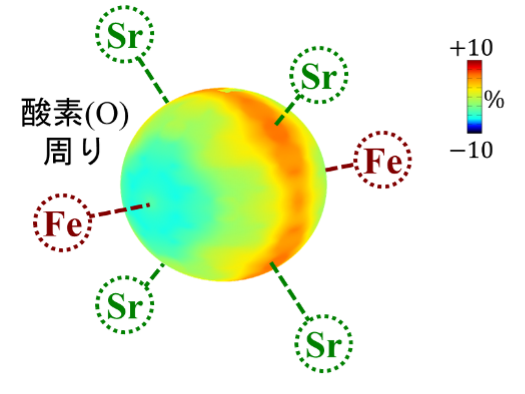2023-08-22 ロイヤルメルボルン工科大学(RMIT)
◆自動車の自動化には5つのレベルがあり、レベル3および4では緊急時に運転手が制御を行う必要があります。研究は、運転手が仕事、娯楽、休息中に車両の制御を効果的に行う能力に影響を与えることを示し、制御の効果を評価しました。結論として、政策制定と自動運転車の安全性向上のための解決策が必要であると強調されました。
<関連情報>
- https://www.rmit.edu.au/news/all-news/2023/aug/driverless-cars-new-study
- https://www.sciencedirect.com/science/article/pii/S0022437523001056
- https://www.sciencedirect.com/science/article/abs/pii/S136984782300102X
重要なのは運転経験だけか?条件付き自動運転におけるドライバーの引き継ぎパフォーマンス Is driving experience all that matters? Drivers’ takeover performance in conditionally automated driving
Neng Zhang, Mohammad Fard, John Laurence Davy, Sibashis Parida, Stephen R. Robinson
Journal of Safety Research Available online: 11 August 2023
DOI:https://doi.org/10.1016/j.jsr.2023.08.003

Highlights
•There is a need to develop solutions to ensure that conditionally automated vehicles are safe for drivers with different levels of experience.
•Some types of NRDT, including working and resting, increase the likelihood of the driver failing to successfully execute a TOR.
•Drivers’ driving experience and performance during the control period are highly correlated with their TOR performance.
•The type and duration of NDRT influence TOR performance, and inexperienced drivers have poorer TOR performance than experienced drivers.
Abstract
Introduction: In conditionally automated driving, drivers are allowed to engage in non-driving related tasks (NDRTs) and are occasionally requested to take over vehicle control in situations that the automation system cannot handle. Drivers may not be able to adequately perform such requests if they have limited driving experience. This study investigates the influence of driving experience on takeover performance in conditionally automated driving. Method: Nineteen subjects participated in this driving simulator study. The NDRTs consisted of three tasks: writing business emails (working condition), watching videos (entertaining condition), and taking a break with eyes closed (resting condition). These three NDRTs require drivers to invest high, moderate, and low levels of mental workload, respectively. The duration of engagement in each NDRT before a takeover request (TOR) was either 5 minutes (short interval) or 30 minutes (long interval). Results: Drivers’ driving experience and performance during the control period are highly correlated with their TOR performance. Furthermore, the type and duration of NDRT influence TOR performance, and inexperienced drivers exhibit poorer TOR performance than experienced drivers. Conclusions and Practical Applications: These findings have relevance for the types of NDRTs that ought to be permitted during automated driving, the design of automated driving systems, and the formulation of regulations regarding the responsible use of automated vehicles.
条件付き自動運転におけるテイクオーバー移行後の運転パフォーマンスに及ぼす非運転関連タスクの影響 Influence of non-driving related tasks on driving performance after takeover transition in conditionally automated driving
N. Zhang, M. Fard, J. Xu, J.L. Davy, S.R. Robinson
Transportation Research Part F: Traffic Psychology and Behaviour Available online 30 June 2023
DOI:https://doi.org/10.1016/j.trf.2023.05.009
Abstract
In conditionally automated driving, drivers are required to respond to takeover requests (TORs) and resume manual driving of the vehicle in situations where the conditionally automated driving systems are ineffective. Prior to TORs, the driver may be engaged in Non-Driving Related Tasks (NDRTs), and their manual driving performance after the takeover transition (post-automation) may require time to return to normal.
This study investigated the influences of NDRTs on manual driving performance during the post-automation period. Seventeen volunteers participated in this driving simulator study. There were three NDRTs: writing business emails (working condition), watching videos (entertaining condition), and taking a break with eyes closed (resting condition). The duration of engagement in each NDRT before resuming manual driving was either 5 min (short interval) or 30 min (long interval). When TORs were made, drivers were given 10 s (TOR lead time) to switch from an NDRT to manual driving and then continue driving on a straight highway for 5 min.
The results demonstrated that driving performance was impaired during the post-automation period. A significant detrimental effect on driving performance was observed for all three NDRT conditions and both task engagement durations. This effect was particularly evident for lane control, where drivers on average spent 4–8 s per minute outside of their lane for each of the five minutes following the TOR. These results indicate that driver engagement in other tasks, even for brief periods, can increase accident risk during the minutes following a TOR. Analysis of individual driving performance revealed a subset of 5 drivers who were strongly impaired, spending 10–25 s per minute outside of their lane throughout the post-automation period. These unsafe drivers could be accurately identified from their driving behaviour during the pre-automation (control) period. Surprisingly, participants were unaware that their degraded driving performance following the takeover. These findings extend the understanding of the disruptive effect of cognitive set-switching while driving and have important implications for the design and safety of autonomous vehicles.


